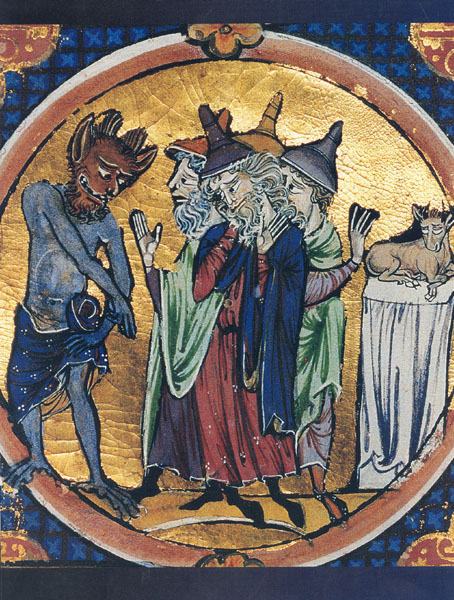
Sometime around the year 1225, a Latin Bible with illustrated commentary was made for King Louis VIII of France.1 It is called the Bible moralisée, and it is a remarkable and disturbing work.
This Bible is massive both in size and scope. Every one of its 246 pages is coated in gold. Each page contains four passages from the Bible, divided into two vertical columns. The manuscript includes passages from the Old Testament books of Genesis, Exodus, Leviticus, Numbers, Deuteronomy, Joshua, Judges, Samuel, Kings, Esdras, Job, Daniel, Tobit, Judith, Esther and Maccabees, and the New Testament Apocalypse of John. (The books of Esdras, Tobit, Judith and Maccabees are included in the Catholic canon, although they do not appear in the Hebrew Bible and are considered apocryphal in Protestant tradition.) Below each of the biblical passages (which are actually paraphrases rather than exact quotations of Scripture) is a commentary explaining the meaning or significance of the biblical text. Both the biblical excerpts and the commentaries are brief. The bulk of the page is taken up by illustrations contained within circular frameworks, or roundels, immediately to the right of each of the two columns of text. Though clearly created by educated clerics, it is more an edifying picture book than a scholarly text.
Already a library member? Log in here.
Institution user? Log in with your IP address.

